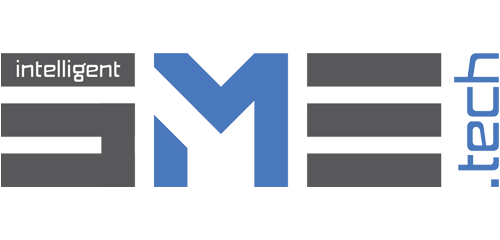A customer relationship management (CRM) tool is used by businesses to manage, analyse and improve interactions with their customers. It enhances communication and improves customer service. But how can SMEs make sure they make the most of this software system? Four experts answer this question, starting below with a response from Iqbal Ahmad, Founder & CEO from Britannia School of Academics:
Being a leadership mentor with more than 15 years of experience and a Senior Fellow of the Higher Education Academy, I have worked with various SMEs. In my experience, it’s not about the CRM that maximises the return on investment, but depends upon how an organisation approaches its implementation and utilisation. Having multiple qualifications such as an MBA and a professional accounting background, I have experienced that if you want to establish a successful CRM implementation, you need an approach with strategic alignment, systematic adoption and continuous optimisation which is also known as a Three Pillar Approach.
First things first, you need to identify your business objectives and align your CRM accordingly. To make the best use of your CRM make sure to focus on the core needs of your business and then utilise the related capabilities of CRM. For instance, in my business, I focus on gathering leads and for this particular objective I have integrated forms into my CRM so that when a learner submits an enquiry form, it directly lands on our CRM. Not only this, I have also integrated the live chat feature into our CRM to differentiate the medium of leads for analysis. This systematic approach is very important for ROI optimisation. I have seen many organisations which I mentored manage to get better results which understand their business needs and utilise the CRM for ROI optimisation in different phases rather than implementing everything all at once. According to Nucleus Research’s 2023 CRM Technology Value Matrix, organisations implementing CRM in phases reported 28% higher user adoption rates in the first year compared to those attempting full-scale deployment.
This is because it would be wise to understand your user behaviours by using data analytics and then utilise CRM features accordingly that address your business needs. As an ACCA professional, I couldn’t stress more on the importance of data analytics because establishing clear protocols of data entry and auditing procedures enables businesses for informed decisions and makes a CRM a trusted source for their business goals.
One of the most important factors for SMEs to maximise their ROI is to regularly measure the performance of your CRM. Make sure the features you have installed and integrated comply with your business model or predetermined KPIs. Doing so will help SMEs to fill the gaps and with continuous improvement of the system will eventually leads to higher return on investment (ROI).
Finally, one thing that SEMs need to understand is that CRM is not just a technology investment but a business transformation tool. They need to shape it according to their business needs. Even SMEs with low budgets can get significant returns on their CRM investment if they do proper planning as per their business requirements, phased implementation based on data analytics and continuous optimisation.
Ghada Fourane, Founder & CEO, Spikatech.ai:
For small- and medium-sized enterprises (SMEs), investing in a Customer Relationship Management (CRM) system can be a game-changer. However, with limited budgets, it’s crucial to ensure that every dollar spent delivers measurable value. Here are five strategies to help SMEs maximise their ROI from a CRM system:
1. Choose the right CRM for your needs
Not all CRM systems are created equal. SMEs should prioritise platforms that offer scalability, ease of use and essential features tailored to their specific business processes. Cloud-based CRMs like HubSpot, Zoho CRM or Salesforce Essentials often provide affordable entry points with flexible pricing plans. Avoid overpaying for features you don’t need – start with the basics and scale up as your business grows.
2. Focus on integration
A CRM system should seamlessly integrate with your existing tools, such as email, marketing automation and accounting software. This reduces manual data entry, minimises errors and ensures a unified view of customer interactions. Many CRMs offer pre-built integrations or APIs to connect with popular SME tools, enhancing efficiency and saving time.
3. Train your team effectively
A CRM is only as good as the people using it.
A CRM is only as good as the data you put into it.
Invest in training your team to ensure they understand how to leverage the system’s full potential. Encourage adoption by demonstrating how the CRM simplifies their workflows, improves customer engagement and drives sales. Regular refresher training can also help keep your team up-to-date with new features and best practices. Drive company reporting KPI from your CRM and create a culture of data.
4. Leverage automation
One of the biggest advantages of a CRM is its ability to automate repetitive tasks, such as follow-up emails, lead scoring and data entry. By automating these processes, SMEs can free up valuable time for their teams to focus on high-value activities, like closing deals or building customer relationships. Automation also reduces the risk of human error, ensuring data accuracy and consistency.
5. Measure and optimise
To maximise ROI, SMEs must track key performance indicators (KPIs) such as customer acquisition cost, sales conversion rates and customer retention. Use the CRM’s analytics and reporting tools to identify trends, spot inefficiencies and make data-driven decisions. Regularly review your CRM strategy and adjust it based on what’s working and what’s not.
Conclusion
For SMEs, a CRM system is not just a tool but a strategic asset. By selecting the right platform, integrating it effectively, training your team, leveraging automation and continuously optimising, you can unlock significant value – even on a limited budget. The key is to focus on outcomes, not just features, and ensure your CRM aligns with your business goals.
Emily Cech, Systems Engineer, SAS:
I work closely with small- and mid-sized enterprises (SMEs) and businesses (SMBs) to align goals and MarTech solutions. Budget constraints are a recurring challenge, with many SMEs struggling to allocate adequate resources to keep pace in a constantly evolving business environment.
SMEs are acutely aware that good purchasing decisions can positively affect their future. I remind my customers to always take a step back and consider the big picture before committing to any technology contract.
Maximising ROI does not mean selecting a product that meets only current needs. Rather, SMEs need to choose MarTech that can grow with their business, while adapting and evolving to meet the changing needs in their industry.
To simplify decision-making, here are five steps to guide SMEs in software evaluation:
- Build a compelling business case
SMEs should start by identifying specific challenges facing their organisation and for which they need to understand the root causes.
For CRM systems, challenges may include enhancing revenue growth, improving the customer experience (CX), reducing operational costs and increasing visibility into key business data. A well-defined problem statement will help justify the investment and secure buy-in from marketing, management, IT and other important stakeholders.
For a customer data platform or CDP, challenges may include improving data management, integration and unification. Solving them can boost customer engagement and ROI.
2) Select and tailor your use case
SMEs should define their top priorities, determine where to begin and set clear goals. A CRM system can automate repetitive tasks, enhance omnichannel CX, hyperpersonalise interactions, streamline sales outreach and optimise the sales process. Similarly, a CDP unifies customer data to create a single customer view. This powers personalised marketing campaigns, better customer segmentation and journey mapping and insights that optimise CX.
3) Prepare your data
SMEs should assess the state and quality of their data and plan for future storage needs. Dirty and incomplete data leads to inaccurate customer insights, inefficient operations and poor decisions.
CRM systems are only as effective as their data and require a strong data foundation. CDPs help maintain quality by centralising and standardising data and providing a unified view of each customer.
4) Define your workforce strategy
SMEs need to evaluate their organization’s structure and skillset to determine current capabilities and gaps.
It is important to consider the number of people needed to manage and maintain CRM or CDP systems. Since many modern software solutions are vendor-hosted and managed, SMEs should involve IT in software evaluations, so any platform they select meets operational demands but does not overburden IT.
5) Build your outcomes
As an SME identifies potential vendors and solutions that meet current and future needs, it needs to maintain budget flexibility. Addressing stretch budget considerations early and aligning them with leadership expectations can strengthen the negotiation position of the SME.
By following these five steps, SMEs can make better and more informed MarTech decisions and invest in scalable and adaptable solutions that support long-term growth.
Gökçe Emer, Business Development Director, Get Golden Visa:
As the business development director of a company focused on lead generation through digital assets, I know that small businesses often face the challenge of creating an efficient sales and marketing funnel with a limited budget. In our own experience, we used to manage high sales volumes as a small team and deal with changing lead volumes depending on market cycles and the programmes we’re offering. At some point, we realised managing the data manually in old-school Excel format was not possible anymore. So, we decided to implement a CRM system a few years ago.
As the first step, we defined our step-by-step sales funnel with the team. It was essential to understand the stages that lead our clients to a close and identify the critical points where we typically lose a client. It helped us clarify where to focus our attention.
When selecting a CRM, defining the needs of both your sales and marketing teams is quite critical. Do you need tools to manage listings, focus on email marketing or streamline calls or meeting scheduling? As an example, scheduling meetings was a time-consuming task for our team. So, we made sure our CRM could handle this feature effectively, helping us save time and allowing the sales team to focus on what really matters.
Another important factor was avoiding a CRM system that would be time-consuming. We couldn’t afford to spend extra hours feeding data into the system, so it was essential that our CRM could automate as much as possible. We explored demos from various CRM providers, spoke to companies with similar structures and chose the smallest package that fit our needs. We didn’t act as perfectionists at that stage. We integrated only the most crucial and time-consuming tasks into the CRM first and started testing it immediately.
Starting small, we could test the system’s efficiency before making any huge commitment. Our needs evolved with time and we added more features and tools to the system. We also planned workshops to review our processes, sales strategies and marketing and sales materials to increase efficiency.
As a director in a millennial company managing a high workload with a small team, I can note that small and medium businesses can maximise CRM ROI by defining clear goals, starting small and ensuring the CRM grows with your needs. Automating the data entry, integrating necessary tools and optimising processes over time will lead to increased efficiency and better use of your resources in the long run.




